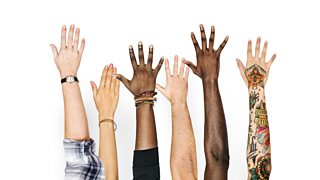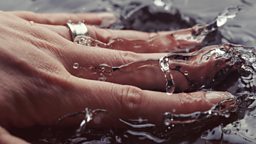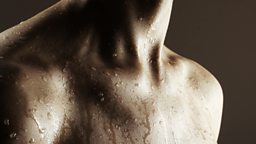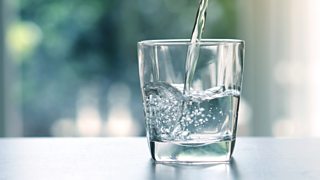10 sensational facts about our skin

In his fascinating book The Remarkable Life of the Skin, now adapted for ����ý Radio 4’s Book of the Week, dermatologist Dr Monty Lyman explores the many layers and lives of our largest and fastest-growing organ.
It’s vital to our health and survival, crucial to our sense of identity, and we see it, touch it and live in it every day. Yet how much do we really know about our skin?
Here are 10 extraordinary facts about our most visible and yet most misunderstood organ.
1. Our skin weighs 9 kilograms
Our skin is our largest organ. Typically, it weighs around 9 kg and has a surface area of approximately two square metres. The network of blood vessels in our skin is 11 miles long, which is enough to bridge Europe and Africa across the Strait of Gibraltar.
2. Our skin is as waterproof as a wax jacket

Our skin is made up of two layers, the epidermis and the dermis. The outermost layer, the epidermis, is less than 1mm thick, yet it carries out almost all the barrier functions of our skin. It’s all to do with its living brickwork of keratinocyte cells, which interlock to resemble an armadillo’s armour. Keratin – which forms our hair and nails, plus the claws and horns of animals – is unbelievably strong. Though it's scratched, squashed and stretched thousands of times a day our skin doesn’t break (at least not easily). These living keratinocytes and the surrounding fatty mortar also make our skin as waterproof as a wax jacket.
3. Skin is the fastest growing organ
The average human sheds more than a million skin cells each day. This accounts for roughly half of the dust found in our homes. In fact, though we can’t see it happening, our whole epidermis is completely replaced every month.
4. Sweat glands are shaped like spaghetti

No matter what the temperature is outside, our body needs to tread an inner tightrope between 36 and 38 degrees Celsius. Anything above 42 degrees can be lethal. Our bodies’ main mechanism for managing our temperature is to sweat.

Our industrious sweat glands are shaped like strings of spaghetti, with one end coiled up deep in the dermis and the rest of the tube stretching all the way to the surface, opening up in a sweat pore. Our skin carries a whopping four million of these glands, and together they are capable of pumping out literally bucket-loads of sweat each day. Remarkably, some humans are capable of sweating three litres an hour.
5. Octopus-like cells protect our skin from the sun
UVA rays penetrate the outer layer of our skin and cause damage to the deeper dermis. Over time this weakens the skin’s supporting layer of collagen and elastin, causing wrinkles, leathery skin and pigmented spots in a process known as photoaging. It’s UVB however that causes sunburn. To protect us, melanocytes – small octopus-like cells that dwell at the bottom of the epidermis – spew out ink called melanin, which is what makes us tan. These black, brown and red pigments can absorb almost any wavelength of ultraviolet light, making them nature’s sunscreen.
6. Carrots make our skin glow
For those who want a healthy tan, without the UV-induced side effects of premature aging and skin cancer, an unexpected solution is one that can be eaten. A diet rich in colourful, carotenoid-containing vegetables such as carrots and tomatoes can marginally, but noticeably, create a golden glow.
South Koreans want to achieve the opposite effect - they are after what is known as a perfect glass skin. Achieving it involves a ten-step beauty regime which uses everything from sheet masks to boost the serums. Listen to the audio clip above to find out more.
7. When someone touches our skin, they also touch our brain
Our skin and our brain are in a constant dialogue to try and find out what is touching us and how we should react. Aided by sight and hearing, our brain starts to form a context for whether what is going to touch us is friend or foe and helps our skin respond accordingly. The expectation of a loving caress temporarily changes the composition of the skin to receive pleasure, while the anticipation of pain actually makes the physical discomfort on the skin feel worse.
8. It’s impossible to tickle our own skin

Even if we copy the same tactile movements of a teasing friend, we’ll never be able to self-tickle. The remarkable ability to tell the difference between sensations caused by our own movements and those from another person is made possible by the cerebellum, a region at the base of our brain that keeps us balanced and monitors our movements.
You can’t see it happening, but your whole outermost layer of skin is completely replaced every month.
Researchers have discovered that whenever we move our own fingers or limbs, our cerebellum produces an exact mental picture of these movements, which then sends a shadow signal to the sensory areas of our brain to dampen down the corresponding sensations on the skin. This helps our skin stay attuned to more important touches by other potentially predatory beings.
9. Rubbing our skin can reduce pain
Physical stimulation of non-pain receptors, such as receptors that detect vibration, can actually reduce pain. This is why rubbing the skin over a freshly knocked knee can dampen down the pain – at least temporarily.
10. Our skin can communicate
If your face starts to feel prickly, clammy and warm – and you’re turning a deep shade of pink – then you’re probably doing what is known as blushing. We know very little about the science of blushing, because it’s hard to measure, but the fact that a blush is visually recognised by another person means that the skin is actually communicating.
Skin-friendly advice from Radio 4...
-
![]()
The Remarkable Life of the Skin
Dr Monty Lyman explores the many layers and lives of our skin.
-
![]()
How to keep your cool in a heatwave
How to survive scorching weather and go from sweltering to flourishing in easy steps.
-
![]()
Everything you need to know about sunscreen
The slippery subject of sunscreen – from SPF dilemmas to reef-friendly labels.
-
![]()
Seven fitness fads you can afford to forget
What's with electrolytes and hydration? We've busted the myths so you don’t have to.




